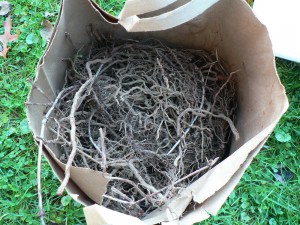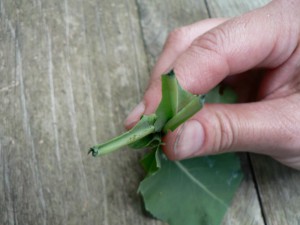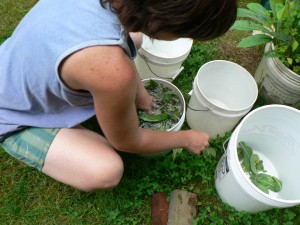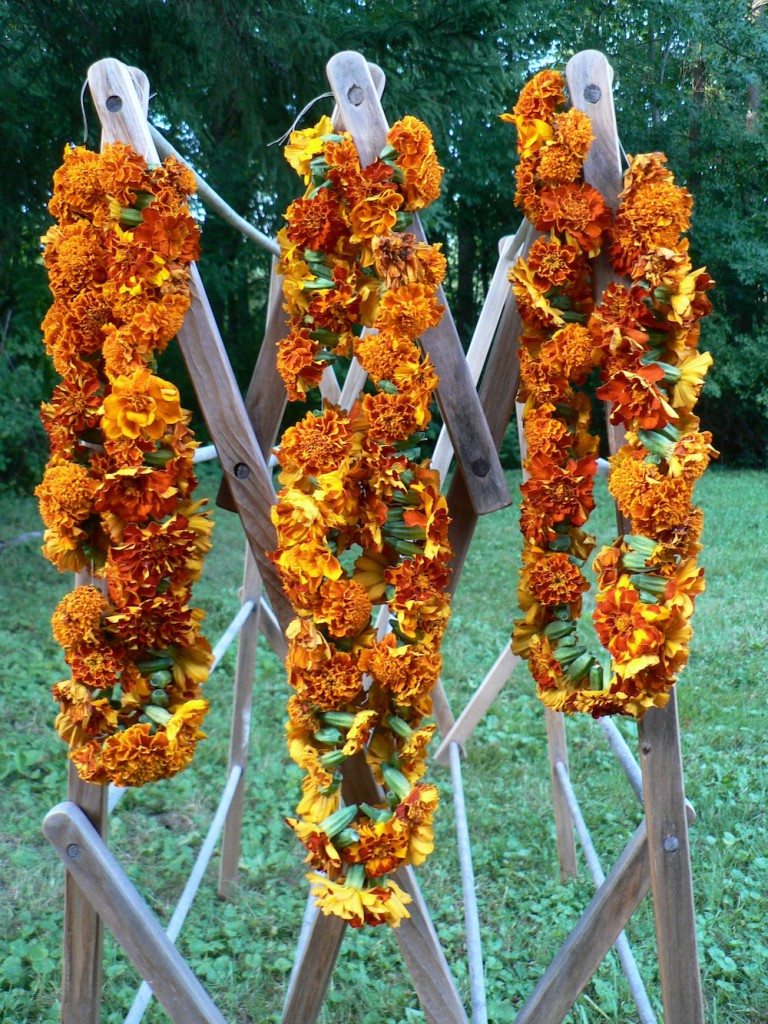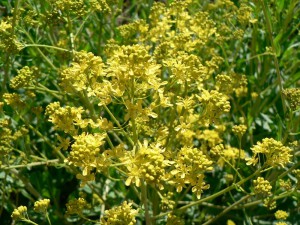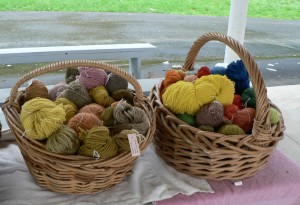Today was a very productive day. I had the day off. It was mostly sunny and warm. And, despite weeks of frosts, the ground was still workable. We’re supposed to get lows in the teens and highs only in the 30s later this week, so I was very motivated to take care of some outdoor tasks before the really cold weather rolls in.
I already wrote about digging up approximately one third of my madder bed a couple weeks ago. I already rinsed some of the madder roots I dug up, and they are already dried. I didn’t document that earlier batch. This morning I rinsed the rest of what I had dug up the other day.
Here is a brown paper grocery bag full of dried but still dirt-covered roots. I hadn’t planned to dry them first, it’s just that I didn’t manage to rinse them off before they dried. Fortunately I didn’t have any issues with mold.

